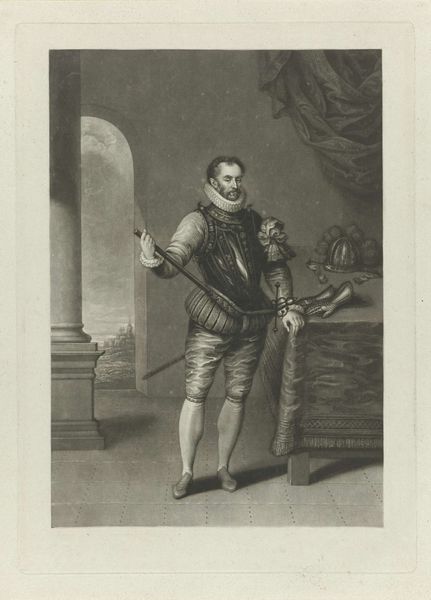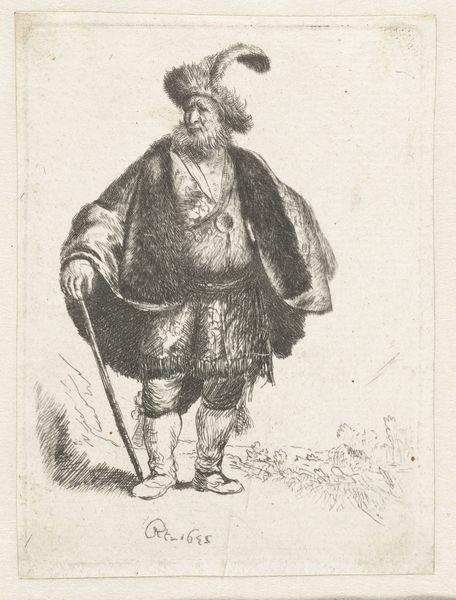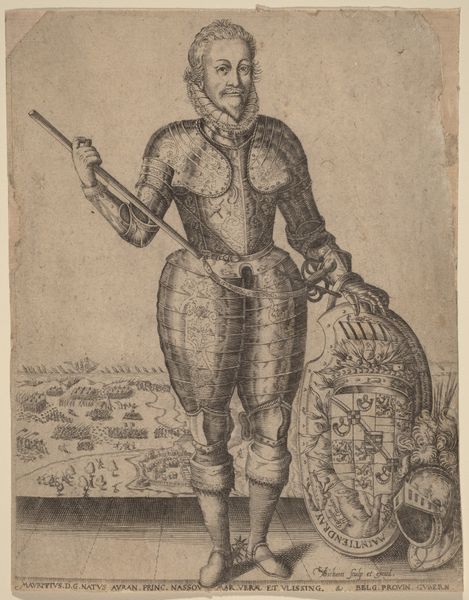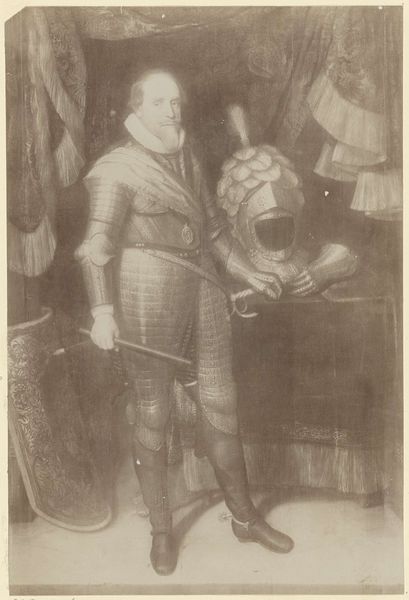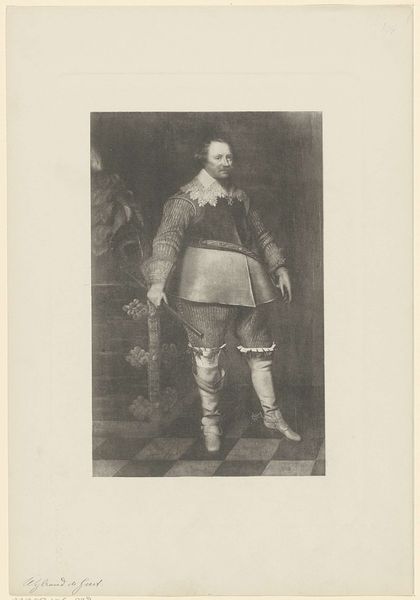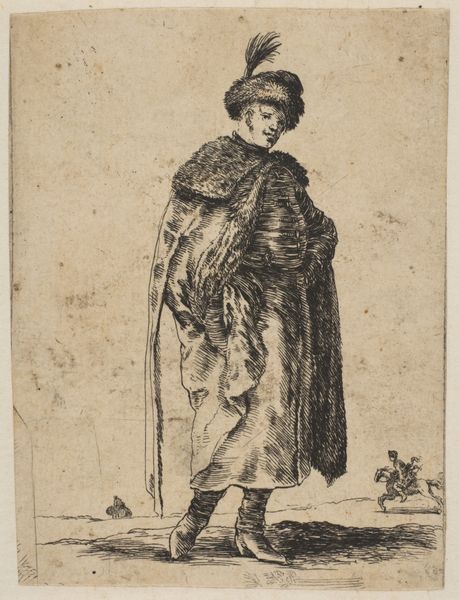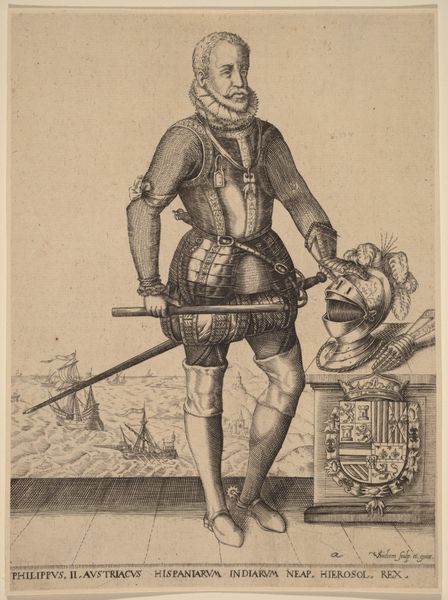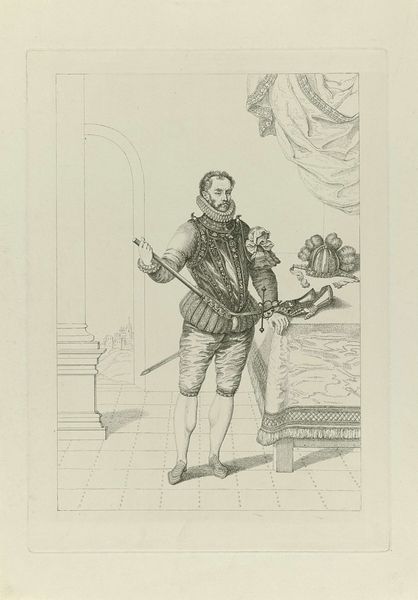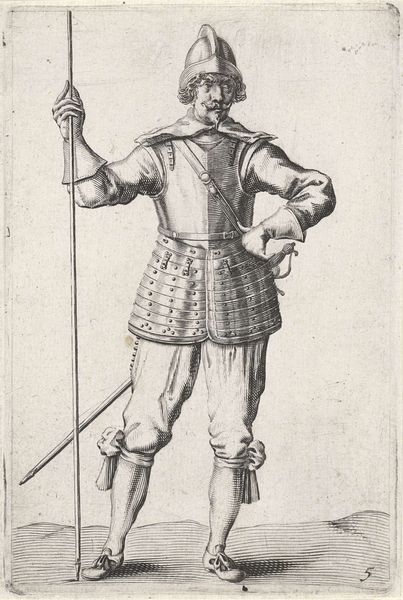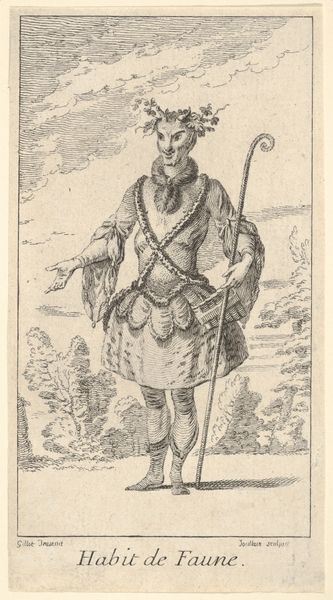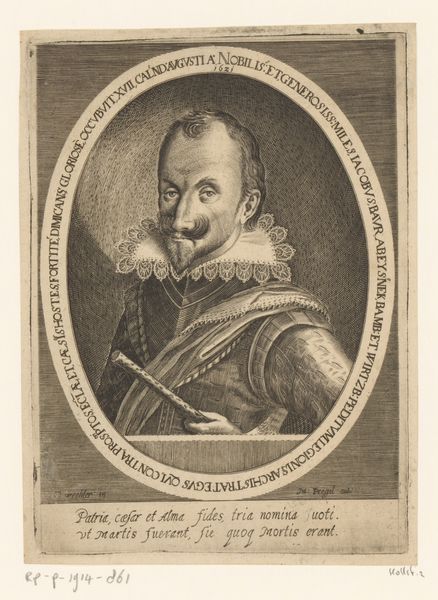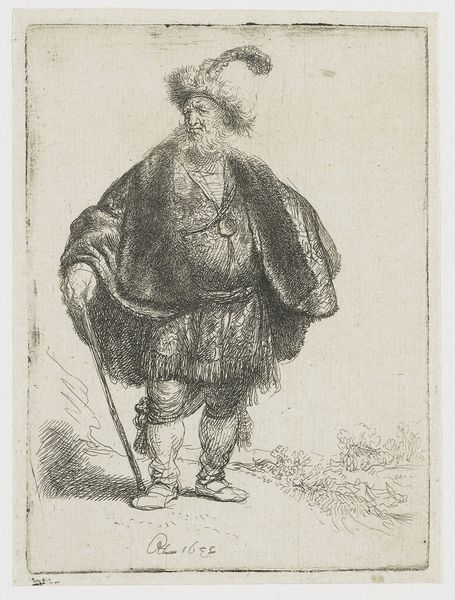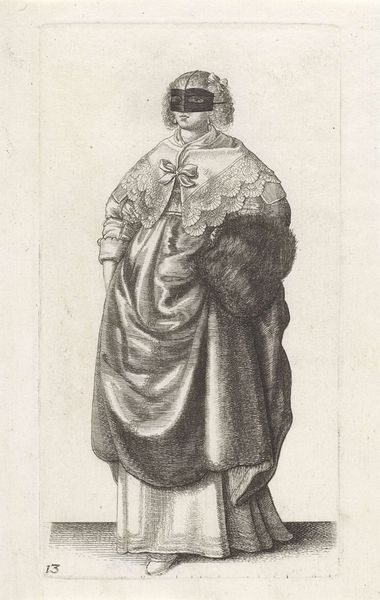
oil-paint
#
portrait
#
baroque
#
dutch-golden-age
#
oil-paint
#
oil painting
Dimensions: support height 57.3 cm, support width 39.5 cm, outer size depth 6.5 cm
Copyright: Rijks Museum: Open Domain
Editor: Here we have an oil painting from circa 1630-1640, Portrait of Pieter Pietersz Hein, whose creator remains anonymous. What strikes me is the composition, split between the darkness on the left and a glimpse of a brighter scene through the doorway. How do you interpret this contrast, considering the subject's position and the historical context? Curator: This painting captures Hein, a celebrated naval hero, within the visual language of Dutch power and burgeoning global trade. The division you noticed isn't just aesthetic. Think about the Dutch Golden Age: incredible wealth and artistic achievement built, in part, on maritime dominance, yet shadowed by colonial exploitation. That darkness hints at the violence inherent in this prosperity. Editor: So, you're suggesting the painting doesn't simply celebrate Hein, but acknowledges a more complicated narrative? Curator: Exactly. His stance, while proud, is also subtly melancholic. Look at the shadowed helmet – a suggestion of warfare and its consequences? This was painted decades after his death. The choice of an anonymous artist also begs the question of patronage and power dynamics. Commissioned for public glory or something more personal and private? We need to consider these intersectional narratives. Editor: I hadn't thought about the artist's anonymity in that light, that there are other forces at play, perhaps hidden agendas within the work's creation and dissemination. Curator: Portraits like these served as powerful statements, shaping collective memory. Who controlled that narrative? Who benefited? Thinking critically about these questions unlocks deeper understandings about power, representation, and the legacy of Dutch colonialism. What stories are present and what is intentionally absent? Editor: It really reframes the artwork, moving beyond just admiration to a more critical understanding of its time. Curator: Indeed, by connecting this painting to the wider currents of history, we unveil not only the accomplishments, but the entangled inequalities of the Dutch Golden Age.
Comments
No comments
Be the first to comment and join the conversation on the ultimate creative platform.
